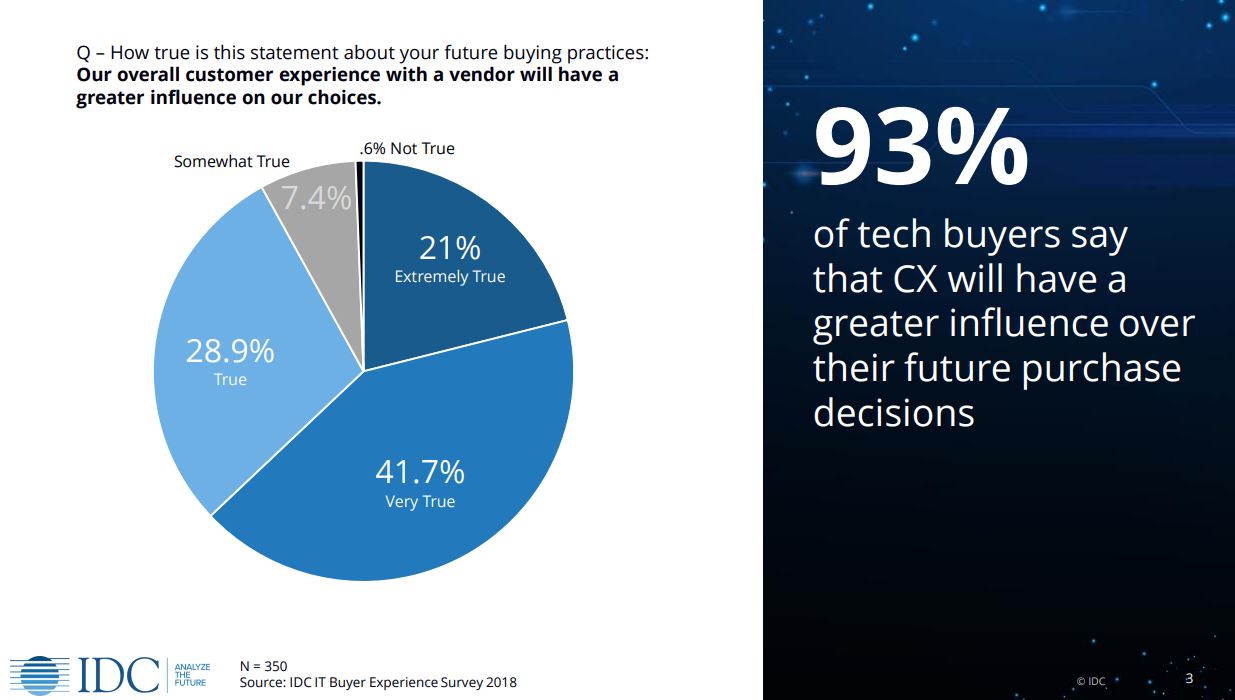Customer Experience (CX) will have a greater influence over future purchase decisions, say 93% of tech buyers. CX improvement must become a top initiative for CMOs or marketing will be the proverbial canary in the coal mine – the first to be blamed if the pipeline erodes due to customers’ poor experience. The CMO’s conundrum? Marketing can’t do this alone. To succeed, companies must integrate into an adaptable, team-based, organization focused on customer success.
What a Customer-centered Team Looks Like
The surgical team in an operating room is a quintessential example of customer-centered teamwork. The OR consists of different specialists. Although each expert has a unique job, each member cooperates, knows their role, and behaves accordingly. The surgical team shares a common, customer-centric mission – the health and safety of the patient. Behind the scenes is a massive support system. But despite this complex structure, what the patient experiences is seamless.
In General Stanley McChrystal’s best-selling book, “Team of Teams: New Rules of Engagement for a Complex World”, he describes how he transformed a cumbersome, conventional, special forces organization into a modern powerhouse able to meet the new challenges it faced in Iraq. Al Qaeda were adaptive. When he arrived, coalition forces were failing despite their astounding force and exceptional planning. McChrystal eliminated traditional hierarchy in favor of a network of teams that pushed decision-making to the operators on the ground while connecting them to a high-information support system.
Tech companies don’t typically work like this. Discrete functions (e.g., sales, finance, marketing, HR, support) are separated into distinct units with relative autonomy. This functional arrangement has been the primary corporate structure since the early 20th century when Frederick Winslow Taylor laid down the foundational processes for organizational efficiency. In my work with tech marketing companies, I find that most executives don’t even question it.
However, because a functional structure is optimized for the company’s benefit, it causes pain and suffering for customers. Tucked comfortably in their functions, it’s easy for staff to miss or ignore situations where customer experience has gaps or duplications. When working with companies organized in traditional ways, customers must do the annoying work of knitting everything together.
Three Options for Team-based Organizations
Solving today’s complex challenges needs great minds from multiple disciplines. Leading companies are progressing towards an agile, customer-responsive, teams-based approach. Here are three organizational options:
- Tiger Teams: Experts from various functions join forces to expedite a project. A film production company assembles a tiger team to produce a movie. A CMO used tiger teams to quickly scale an account-based marketing program. Teams formed around role-based personas (such as the chief data officer). Each campaign team had eight members: a leader plus seven specialists (analytics, content, web/inbound, outbound, communications, sales enablement, and social). They completed 100 programs in 100 days.
- The Network of Teams: Marketing organizations are evolving towards a structure that works like a tiger team but supports a longer-term recombination of capabilities. Four types of teams form the network: Campaign teams assist customers through their decision-journey. Specialists from content, analytics, and channel teams are dynamically assigned to campaign teams. Strategy teams guide. Marketing operations and technology teams supply the systems, processes, metrics, and guidance required to make the network successful.
- New Multi-disciplinary Functions: Alarming gaps between traditional functional hand-offs may be exposed by disruption. The software-as-a-service business model uncovered weak onboarding, adoption, and value realization processes. Customer Success Management (CSM) was needed as the new master orchestrator because so many different functional disciplines – pro serve, product, sales, marketing, support, education – are needed to serve these processes. Undoubtably, more multi-disciplinary functions will emerge over time.
Essential Guidance: Understand which customer journey experiences matter most to your customer. Then build multi-disciplinary teams around making those moments perfect.
Making Multi-disciplinary Teams Successful
Diverse teams will not come together organically. Two aids are especially critical for transition and long-term success.
- A Customer Experience Capability “Fabric” supplies the glue. CX Capability “Fabric” consists of essential services that woven together delivers quality customer experiences and help diverse teams work together. Fabric elements include insights systems to provide context and feedback, trust systems to protect customers and strengthen relationships; interaction systems to conduct the digital dialog and message systems to coordinate the company voice.
Essential Guidance: Every connection you make within fabric, no matter how small, will make a difference. Networks work on power laws. A small improvement in the links results in proportionally greater benefit.
- Operationally-savvy leaders. Companies making strong headway in customer experience choose operationally proficient people to lead the effort. A promising structure is a cross-company executive council co-led by an operational leader and the CMO. Integrating multi-disciplinary teams and building the capability fabric take tremendous operational chops. The CMO plays a complementary role supplying vision, communications, and voice-of-the-customer. Even just within marketing, operational capability is key. According to IDC’s tech marketing benchmark survey, the percent of staff in marketing operations roles is 5.9% of total marketing staff, an increase of 40% in 5-years.
Essential Guidance: Select CX leaders for their operational experience and collaborative skills.
“The way a team plays as a whole will determine its success. You may have the greatest bunch of individual stars in the world but it they don’t play together, the club won’t be worth a time.” ~ Babe Ruth
The same is true of customer experience. Your marketing may be a star. Your sales group may be a star. Your support may be a star. But if they don’t play together – your company won’t be worth a dime.
Want to learn more about creating a team centered on customer experience? Listen in on my presentation from IDC Directions 2019 to learn how companies are tackling this task:





